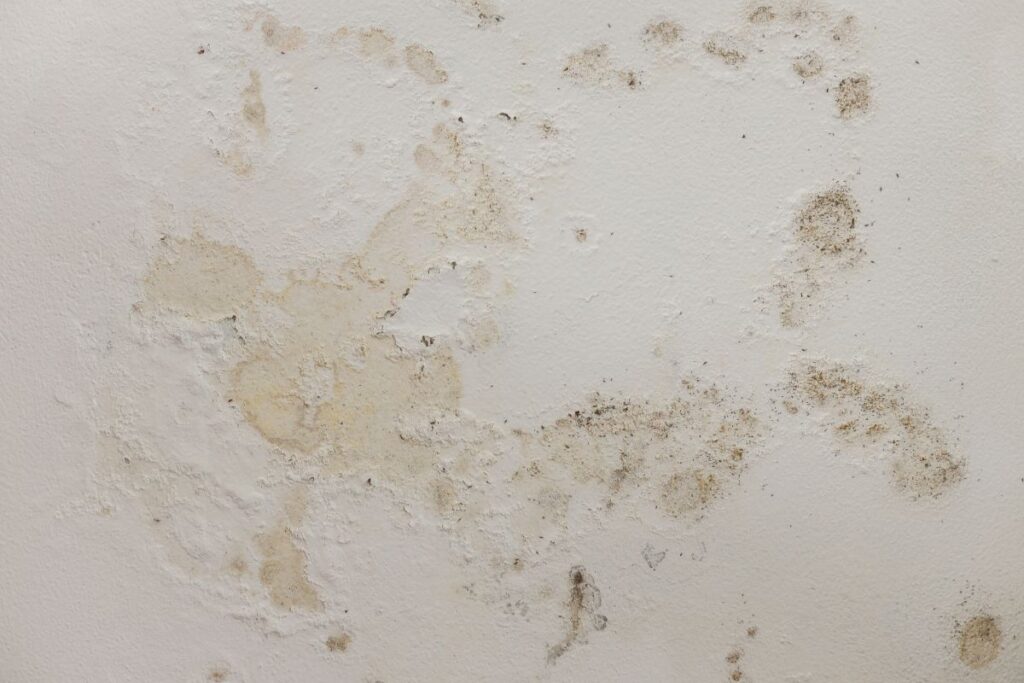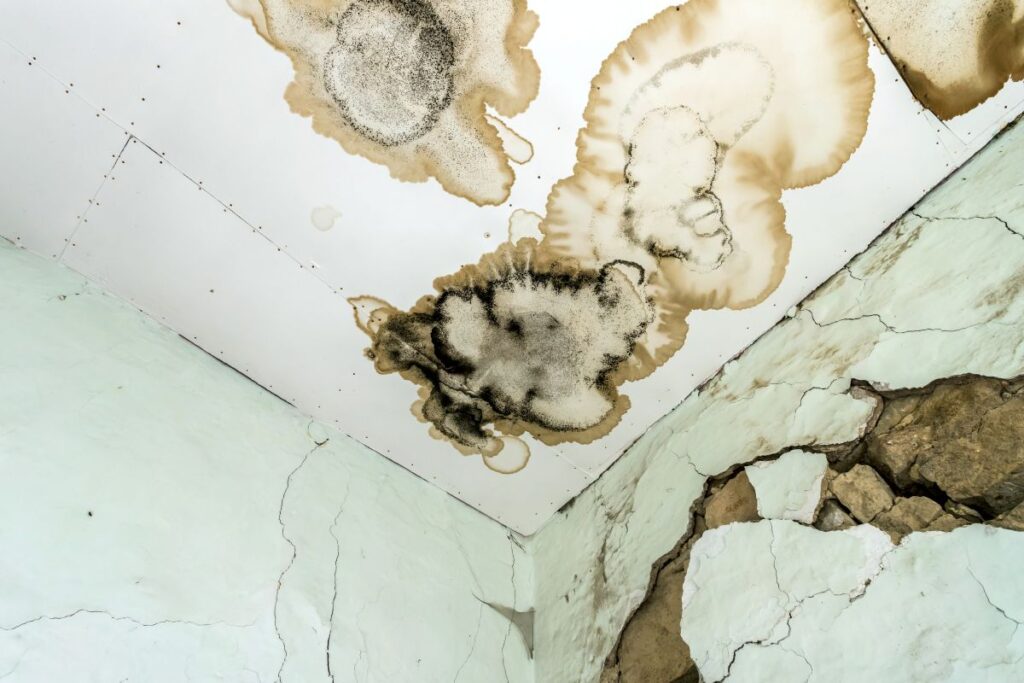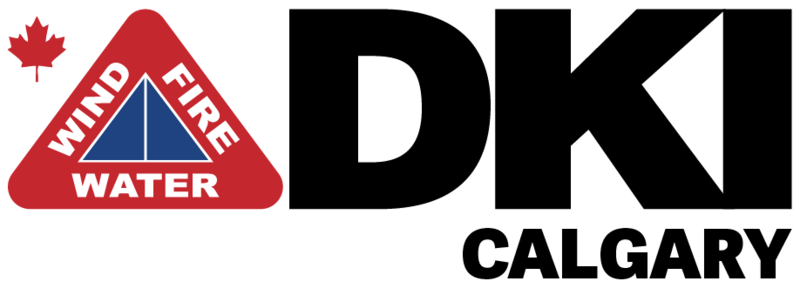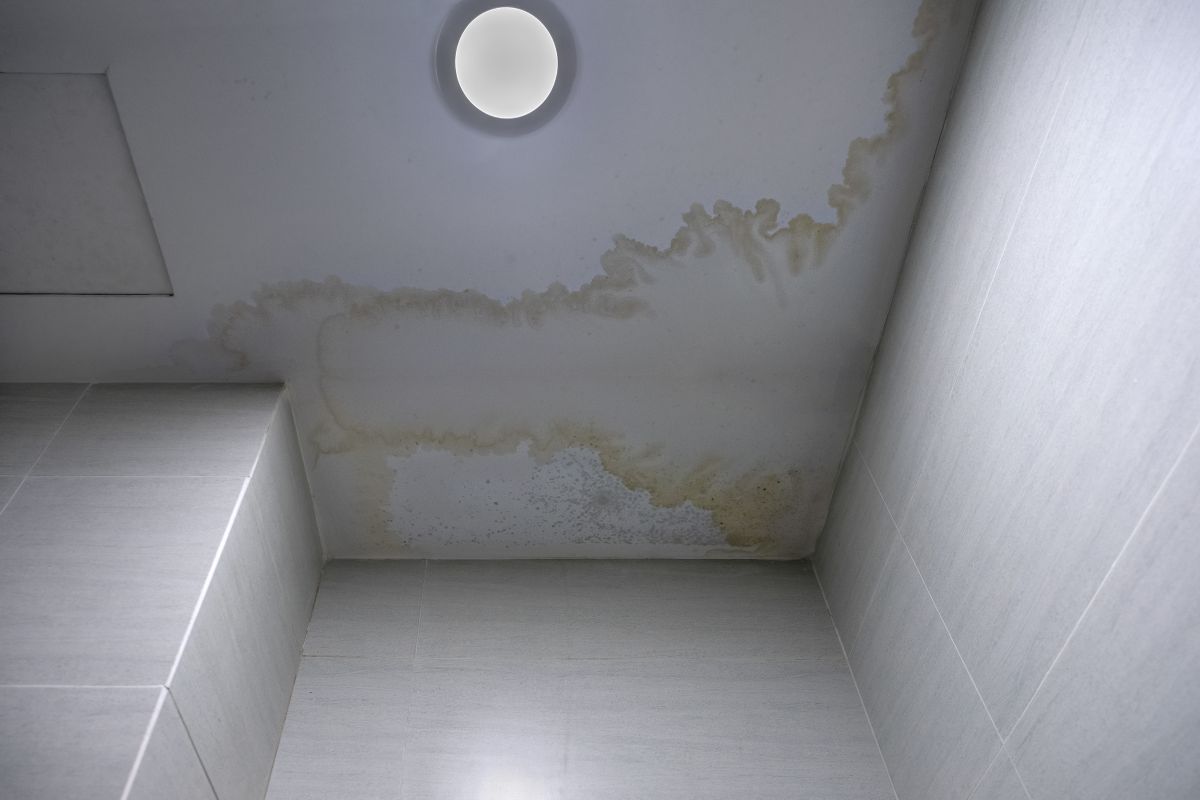Table of Contents
- Introduction
- Why Ceiling Leaks Happen
- Immediate Steps to Take
- Ensure Safety First
- Contain the Leak
- Protect Your Belongings
- Document the Damage
- Why You Should Call DKI – Calgary Immediately
- Temporary Fixes vs. Permanent Repairs
- Understanding Damage and the Restoration Process
- Water Damage Restoration
- Mould Growth and Remediation
- Asbestos Considerations
- Preventing Future Ceiling Leaks
- Case Studies from Calgary
- Insurance, Costs, and FAQs
- Conclusion and Next Steps
1. Introduction
Water leaking from your ceiling is a serious property emergency — not just a minor nuisance. Whether it’s caused by a burst pipe, roof damage, or a plumbing mishap, the consequences can be extensive.
From structural weakening to mould growth and even asbestos disturbance, the effects of a ceiling leak can spiral quickly if not addressed. Every minute counts, which is why knowing exactly what to do in those first moments can save you thousands of dollars and weeks of headaches.
At DKI – Calgary, part of the trusted DKI Canada network, we specialize in rapid disaster and property restoration services, including water and flood damage cleanup, mould and asbestos remediation, and full structural repairs. This guide will walk you through the immediate steps to take, why professional restoration matters, and how to prevent future ceiling leaks.
2. Why Ceiling Leaks Happen
Understanding the source of the leak is critical for both short-term fixes and long-term prevention.
Common causes include:
- Plumbing Failures – Burst pipes, leaking fittings, or corroded copper lines.
- Roof Damage – Missing shingles, cracked flashing, or damage from ice dams.
- HVAC Issues – Condensation buildup or clogged drain lines.
- Overflow Events – Bathtubs, sinks, or toilets overflowing upstairs.
- Poor Sealing or Structural Weakness – Water entering through unsealed joints or deteriorating roof decks.
The leak source isn’t always directly above the wet spot — water can travel along beams or insulation before dripping down.
3. Immediate Steps to Take

3.1 Ensure Safety First
- Turn off the power in the affected room to prevent electrocution.
- Avoid standing directly under a bulging ceiling — it may collapse without warning.
- If safe, use a step ladder for placing buckets or tarps under the drip.
3.2 Contain the Leak
- Place a bucket, pot, or waterproof container under the drip.
- For bulging ceilings, drill a small relief hole to let water escape and prevent an explosive burst.
- Cover floors with plastic sheeting or towels.
3.3 Protect Your Belongings
- Remove electronics, furniture, and valuables from the area.
- Place water-sensitive items on tarps or move them to another room.
3.4 Document the Damage
- Take photos and videos of the leak, wet areas, and any damaged belongings.
- Keep notes on when the leak started and actions you’ve taken.
- These records are invaluable for insurance claims.
4. Why You Should Call DKI – Calgary Immediately
Water damage often extends far beyond what you can see. Moisture seeps into drywall, insulation, subfloors, and even structural beams, creating hidden risks.
With DKI – Calgary, you get:
- 24/7 Emergency Response
- Advanced moisture detection tools
- Certified mould and asbestos remediation
- Contents restoration & cleaning
- Insurance coordination support
A fast response reduces repair costs, prevents mould growth, and protects your property’s structural integrity.
5. Temporary Fixes vs. Permanent Repairs
Temporary Fixes You Can Do:
- Shut off water supply to the affected area.
- Patch small roof holes with roofing cement.
- Clear debris blocking roof drainage.
Permanent Repairs (Professional Only):
- Replace damaged pipes or fittings.
- Remove & replace saturated drywall and insulation.
- Complete mould remediation.
- Repair roof sections with missing or damaged shingles.
6. Understanding Damage and the Restoration Process
6.1 Water Damage Restoration
Professional restoration involves:
- Emergency water extraction.
- Moisture mapping with specialized meters.
- Drying with high-powered air movers & dehumidifiers.
- Sanitizing and deodorizing.
- Repairing & rebuilding damaged structures.
6.2 Mould Growth and Remediation

- Mould can start growing within 24–48 hours.
- Causes respiratory issues and property damage.
- Requires professional containment and removal — never paint over mould.
6.3 Asbestos Considerations
- Common in pre-1990 homes in ceilings, insulation, and drywall compounds.
- Disturbance during a leak cleanup can release dangerous fibers.
- Always test for asbestos before cutting or removing materials — DKI is licensed for safe abatement.
7. Preventing Future Ceiling Leaks
- Inspect roof twice yearly.
- Keep gutters clear.
- Insulate attic to prevent ice dams.
- Check plumbing connections annually.
- Service HVAC systems regularly.
8. Case Studies from Calgary
Case 1: Roof leak after spring thaw — DKI repaired roof, dried interior, replaced drywall. Completed in 5 days.
Case 2: Burst pipe in an older home — asbestos found in ceiling texture. DKI performed safe abatement and full restoration in under two weeks.
9. Insurance, Costs, and FAQs
Insurance Coverage:
- Covers sudden water damage (burst pipes, storms).
- Doesn’t cover slow leaks due to neglect.
Cost Factors:
- Size of affected area.
- Presence of mould or asbestos.
- Type of repairs needed.
FAQ: Can I just paint over the stain?
No — moisture must be removed and damaged materials replaced to prevent mould.
10. Conclusion and Next Steps
If water is leaking from your ceiling:
- Ensure safety.
- Contain the leak.
- Document everything.
- Call DKI – Calgary immediately.
We’ll handle the cleanup, repairs, and insurance coordination — getting your home or business back to normal fast.

